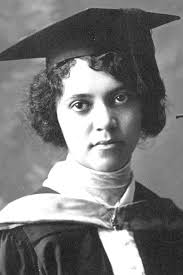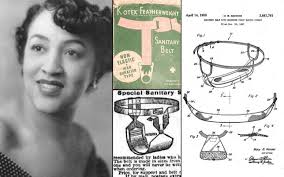This is the third week and second part of our May biweekly series that focuses on black women who changed the world with their inventions.

Alice Ball
Alice Augusta Ball was born on July 24, 1892, in Seattle, Washington. Her father, a lawyer, photographer and Black newspaper editor, James Presley Ball Jr., married Laura Louise Howard Ball, a white photographer who grew up in a prestigious, middle-class family.
James Presley Ball, her paternal grandfather, was a renowned photographer who had captured famous people. At 10, her family moved to Honolulu, believing that the warm weather would cure her grandfather’s arthritis.
In 1904, her family moved back to Washington. She had chronic asthma, which caused her to have a small stature, but despite this, she was very active.
She furthered her studies at the Washington University, where she earned two degrees in four years, and after that, she moved back to Hawaii to earn the third degree. She graduated in 1915, becoming the University’s first Black woman chemistry instructor, its first Black and first female master’s degree holder.
Her studies on the chemical make-up of plants attracted the attention of Harry T. Holdman. In 1915, he asked her to help find a way to make chaulmoogra tree oil more injectable for the Cure of leprosy.
This meant that most of her time when she wasn’t teaching English or lecturing at the University was spent trying to find a way to make chaulmoogra tree oil more dissolvable in water.
Less than a year later, with the help of Arthur L. Dean, she learnt that by freezing the oil’s fatty acids to isolate its ester compounds, it could be modified to form an injectable, water-soluble yet effective treatment.
In 1916, she fell ill and died. After her death, Dean published her discovery and claimed it as his own, calling it the Dean method. For decades, the truth of Ball’s discovery was ignored till Holdman gave credit to her discovery, and it was eventually looked into.

Mary Beatrice Kenner
Mary Beatrice Kenner, the African American woman with the most patents, was born in Monroe, North Carolina, on May 17, 1912. While her mother is unknown to public records, her father, Sidney Nathaniel Davidson, was an inventor.
She began inventing at the age of 6 when she tried creating a self-oiling door hinge. Her family had numerous inventors, from her grandfather to her father and sister.
She graduated from Dunbar High School in 1931 and dropped out of Howard University for financial reasons. She took odd jobs up till 1941, when she became a federal employee.
She became a professional florist in 1950, had her shop and invented things in her spare time. Her first patent was in 1957 for the sanitary belt, which despite her creating it in the 1920’s she could not afford to patent.
She patented numerous other things. In 1951, she got married to James Kenner, and they both were foster parents. He died in 1983, and Mary Beatrice Davidson Kenner died on January 13, 2006, without receiving any awards or formal recognition for her innovations.
READ ALSO 👇👇👇
Two Important Inventions That Will Not Exist Without Black Women
Two Important Inventions That Would Be Impossible Without Black Women
Two Important Inventions That Would Not Exist Without Black Women
Two Important Inventions That Would Not Exist Without Black Women
